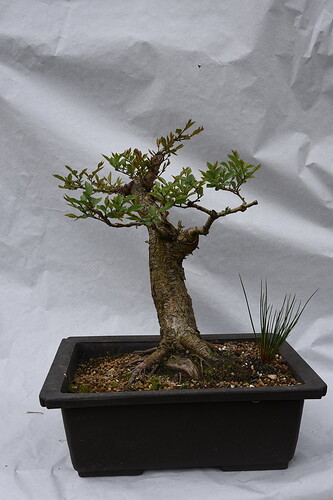I am curious if anyone has used Siberian Elm for bonsai and your experiences. I’m hoping for better info than I’ve found around the internet because of the knowledge I assume we mostly have from Ryan. I’m thinking that these would definitely fit into “aggressively growing” deciduous trees. I know people say they randomly drop branches, which I see in the landscape around where I live, but I’m curious if there is some horticultural reason for this that we can manipulate as a bonsai to avoid this. If so I have a LOT of digging to do since these are about ever 10 feet in my town and people abhor them.
Some info I was able to find:
It hybridizes with native elms, which can lead to the potential for why European siberian elms are used more in bonsai? Maybe, maybe not.
This about water use may be interesting:
U. pumila can exist in extremely dry sites, through various adaptive techniques. They
prefer contact with the water table as indicated by their natural occupation of seasonal stream
beds. They will not tolerate standing water however (Dulamsuren 2009, 23). The water
seeking root systems grow to seek pockets of water in the soil substrate as well as widen out to
take advantage of the rain that may fall. “The shallow and wide distribution of tree roots
facilitated the utilization of shallow water when ground water was not available. This
belowground biomass allocation strategy is common and critical for plants distributing in the
semi-arid environments to collect water through vast root systems” (Li Gang 2011, 222).
These trees are evolved to withstand insecure water supplies. They do not regulate
their transpiration in response to drought stress as some desert plants, but rather continue full
transpiration to evaporatively cool the high leaf temperatures during the day. U. pumila
instead employs the technique of altering the osmotic potential in the roots to raise the water
uptake to counter the continuing water loss. (Dulamsuren 2008, 23). This immediate
physiological adaptation to drought stress is aided by continued growth incorporating structural
improvements to improve water use efficiency and further drought resistance. Small xylem
vessels are developed to resist cavitation of the vascular system in the transport of water to the
Sibirische Ulme (Wikipedia)
leaves (Dulamsuren 2008, 23). Drought damage occurs only under severe conditions. In a study
near the Aral Sea, “U. pumila exhibited reduced water use in response to the termination of
irrigation water supply. As its stem and canopy growth continued, the enhanced water use
efficiency of U.pumila may be an adaptation to the
Another:
U. pumila grows very quickly into forms structurally unsound for its size. It develops low
branch attachment angles that are structurally weak and prone to breakage in storms. It’s
habit of shutting down portions of its crown in response to drought stress causes large amounts
of dead material.


